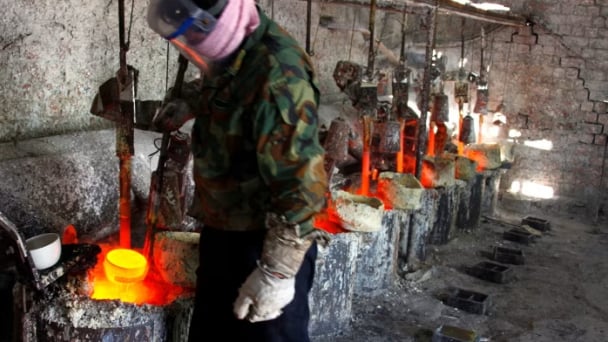June 14, 2025 | 15:14 GMT +7
June 14, 2025 | 15:14 GMT +7
Hotline: 0913.378.918
June 14, 2025 | 15:14 GMT +7
Hotline: 0913.378.918
The UN's World Meteorological Organization said it now estimated there was a 60 per cent chance that El Nino would develop by the end of July, and an 80 per cent chance it would do so by the end of September.
El Nino, which is a naturally occurring climate pattern typically associated with increased heat worldwide, as well as drought in some parts of the world and heavy rains elsewhere, last occurred in 2018-19.
Since 2020 though, the world has been hit with an exceptionally long La Nina - El Nino's cooling opposite - which ended earlier this year, ceding way to the current neutral conditions.
And yet, the UN has said the last eight years were the warmest ever recorded, despite La Nina's cooling effect stretching over nearly half that period.
Without that weather phenomenon, the warming situation could have been even worse.
La Nina "acted as a temporary brake on global temperature increase", WMO chief Petteri Taalas said in a statement.
"The development of an El Nino will most likely lead to a new spike in global heating and increase the chance of breaking temperature records," he warned.
"MORE EXTREME WEATHER"
At this stage, there is no indication of the strength or duration of the looming El Nino.
The last one was considered weak, but the one before that, between 2014 and 2016, was considered strong, with dire consequences.
WMO pointed out that 2016 was "the warmest year on record because of the 'double whammy' of a very powerful El Nino event and human-induced warming from greenhouse gases".
Since the El Nino effect on global temperatures usually plays out the year after it emerges, the impact will likely be most apparent in 2024, it said.
"The world should prepare for the development of El Nino," Taalas said.
This "might bring respite from the drought in the Horn of Africa and other La Nina-related impacts, but could also trigger more extreme weather and climate events" he said, stressing the need for effective early warning systems "to keep people safe".
No two El Nino events are the same and that their effects depend in part on the time of year, WMO said, adding that it and national meteorological services would be closely monitoring developments.
The climate pattern occurs on average every two to seven years, and usually lasts nine to 12 months.
It is typically associated with warming ocean surface temperatures in the central and eastern tropical Pacific Ocean.
Increased rainfall is usually seen in parts of southern South America, the southern United States, the Horn of Africa and central Asia, while severe droughts can occur over Australia, Indonesia and parts of southern Asia.
During summer in the northern hemisphere, El Nino's warm water can also fuel hurricanes in the central and eastern Pacific Ocean, while hindering hurricane formations in the Atlantic Basin, WMO said.
(AFP)

(VAN) Extensive licensing requirements raise concerns about intellectual property theft.

(VAN) As of Friday, a salmonella outbreak linked to a California egg producer had sickened at least 79 people. Of the infected people, 21 hospitalizations were reported, U.S. health officials said.

(VAN) With the war ongoing, many Ukrainian farmers and rural farming families face limited access to their land due to mines and lack the financial resources to purchase needed agricultural inputs.

(VAN) Vikas Rambal has quietly built a $5 billion business empire in manufacturing, property and solar, and catapulted onto the Rich List.

(VAN) Available cropland now at less than five percent, according to latest geospatial assessment from FAO and UNOSAT.

(VAN) Alt Carbon has raised $12 million in a seed round as it plans to scale its carbon dioxide removal work in the South Asian nation.

(VAN) Attempts to bring down the price of the Japanese staple have had little effect amid a cost-of-living crisis.